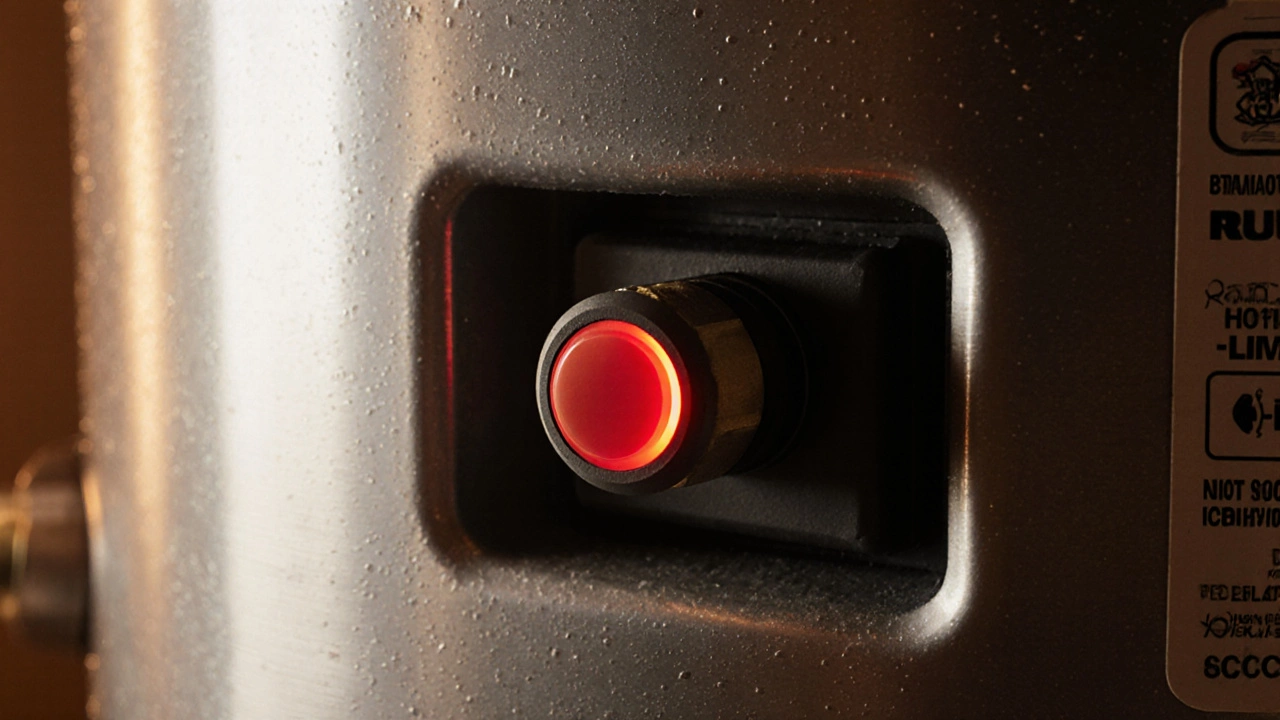When working with reset button on water heater, a safety switch that cuts power when the heater overheats. Also known as high‑limit reset, it protects the unit from damage and prevents dangerous temperature spikes. This little button often sits behind a small access panel, but it plays a big role in keeping your hot water reliable.
The reset button on water heater is directly linked to the high limit switch, a device that trips when internal temperature goes too high. When the water in the tank gets hotter than the safe limit—usually around 210°F (99°C)—the switch opens, cutting electricity or gas to the heating element. Pressing the reset button closes the circuit again, but only after the cause of the trip has been addressed. In short, the button enables the heater to run again once conditions are safe.
Every water heater, whether electric or gas, relies on a thermostat, a temperature‑sensing component that tells the heater when to turn on or off. The thermostat works with the high limit switch; the thermostat controls regular heating cycles, while the high limit switch acts as an emergency brake. If the thermostat fails, the heater can run unchecked, causing the high limit switch to trip and the reset button to pop out.
Understanding these relationships helps you diagnose problems faster. For example, if you reset the button and it trips again within minutes, you’re likely looking at a faulty heating element, a broken thermostat, or sediment buildup that’s insulating the water and forcing higher temperatures.
Here’s a quick, step‑by‑step way to test the button safely:
Common culprits that make the reset button pop include:
Safety should never be an afterthought. Always verify that power is disconnected before touching the button. Wear insulated gloves, and never try to force a stuck button; a broken button can damage the switch mechanism. If you notice burnt smells, rust, or water leaking around the heater, stop and call a professional right away.
When to bring in a pro? If you’ve reset the button twice and it still trips, if the heater shows any signs of leakage, or if you’re unsure about handling gas connections, it’s best to let a licensed technician take a look. They can test the heating element, replace a faulty thermostat, or flush the tank to remove sediment.
Below you’ll find a curated collection of articles that dive deeper into each of these topics—how to flush a water heater, replace an anode rod, troubleshoot heating elements, and more. Use them as a practical roadmap to keep your hot‑water system running smoothly, or to decide when it’s time for expert help.
Posted by
Orin Trask
0 Comments

Learn when it's safe to press the water heater reset button, step‑by‑step reset procedures for electric and gas units, and key warning signs that require professional help.
read more